Pull Test In Parkinsons Disease
A standardized posturographic test and examination procedure was established to reduce variability Patients with PD were examined during an outpatient visit, assessing the clinicalscores Hoehn.
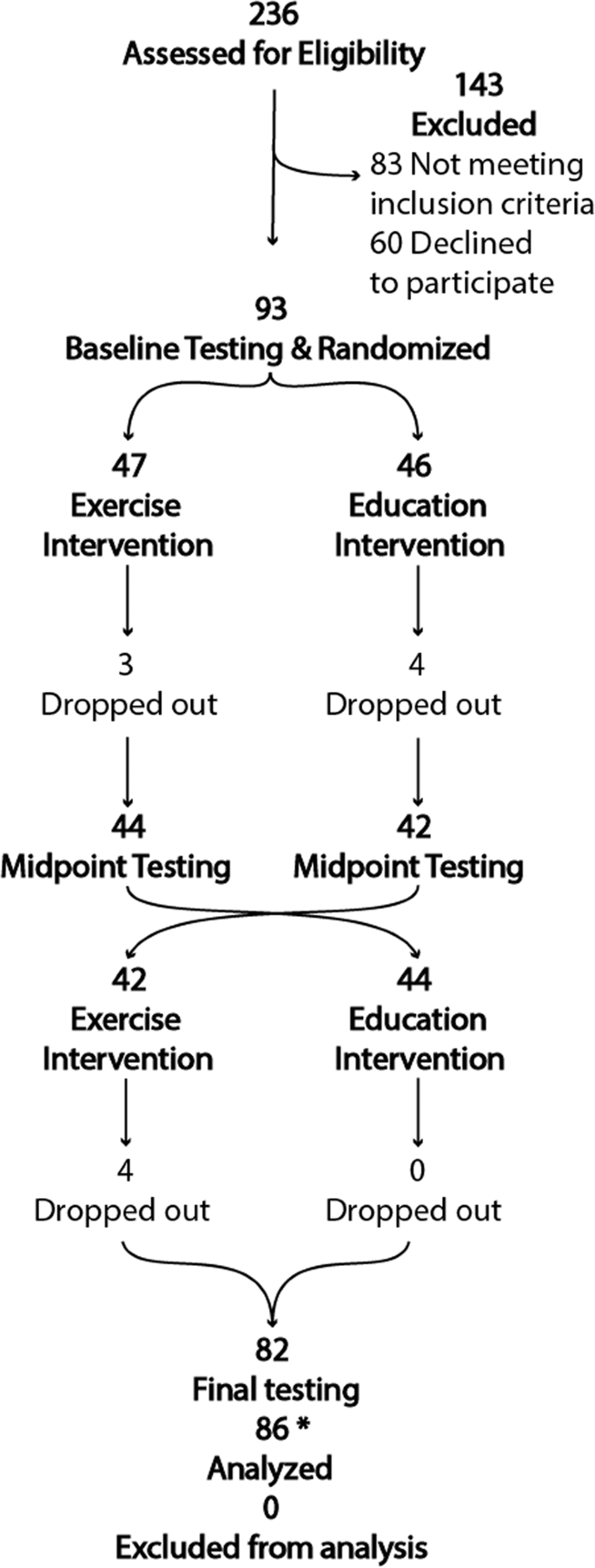
Pull test in parkinsons disease. Variability in pull test (PT) performance can lead to inadequate evaluation of postural instability in patients with Parkinson’s disease (PD) Assessing 66 PTs by 25 examiners, at least two of four raters agreed that specific items were performed incorrectly for stance in 273%, for strength and briskness of the pull in 849%, for examiner’s response in 364%, and for technique issues in 9. ABSTRACT Postural instability (PI) and falls are major sources of disability in Parkinson’s disease (PD) Our objectives were to evaluate the correlation between the pulltest (PT) scores and falls Patients underwent a standardized data collection including demographic, clinical data, and the UPDRS scores for falls and the PT. The UPDRS scale refers to Unified Parkinson Disease Rating Scale, and it is a rating tool used to gauge the course of Parkinson’s disease in patients The UPDRS scale has been modified over the years by several medical organizations, and continues to be one of the bases of treatment and research in PD clinics.
The Pull Test is a quick and informative subscore of the motor part of the Unified Parkinson's Disease Rating Scale (UPDRS), and it is used as the main clinical examination for evaluating postural stability in people with PD It consists of pulling subjects backward from their shoulders and scoring the subject's ability to respond to this abrupt stimulus. Clinical trials Explore Mayo Clinic studies testing new treatments, interventions and tests as a means to prevent, detect, treat or manage this disease Lifestyle and home remedies If you've received a diagnosis of Parkinson's disease, you'll need to work closely with your doctor to find a treatment plan that offers you the greatest relief from symptoms with the fewest side effects. The retropulsion test is widely regarded as the gold standard to evaluate postural instability, and is therefore a key component of the neurological examination in PD A normal retropulsion test distinguishes milder PD (Hoehn and Yahr 1 and 2) from moderate to severe PD (Hoehn and Yahr stage 3 to 5) 2.
Parkinson's Disease NCLEX practice questions for nursing students Parkinson's Disease is a neuro disease that cause movement disorders due to the depletion of the neurotransmitter dopamine In the previous NCLEX review, I explained about other neurological disorders, so be sure to check those reviews out As the nurse, it is important to know the pathophysiology of Parkinson's Disease, the. This can be tested in clinic with the pull test A normal pull test is one to two steps of retropulsion after a brief tug backward;. He turned fairly well and had mild retropulsion, taking five steps on the pull test, but recovering unaided He was diagnosed with early Parkinson disease (PD) He was initiated on carbidopa/levodopa 25 mg/100 mg titrated to 1 tablet 3 times per day before meals.
Objective To study and compare in healthy subjects and patients with Parkinson´s disease (PD) the destabilizing force needed to reach the limit of stability (LoS), the displacements of the center of pressure (CoP) and the postural stabilizing strategies while performing the pull test (PT) Background The PT is the only item that assesses postural stability in the motor part of the Unified. Parkinson's disease or parkinsonism have been described after infections by viruses, such as influenza A, EpsteinBarr virus, varicella zoster, hepatitis C virus, HIV, Japanese encephalitis virus, or West Nile virus1 We report a patient with probable Parkinson's disease, who was diagnosed after severe acute respiratory syndrome coronavirus 2 (SARSCoV2) infection. ABSTRACT Postural instability (PI) and falls are major sources of disability in Parkinson’s disease (PD) Our objectives were to evaluate the correlation between the pulltest (PT) scores and falls Patients underwent a standardized data collection including demographic, clinical data, and the UPDRS scores for falls and the PT.
Here is a video of Dr C performing the pull test on a patient He stands behind the patient and gives a firm pull or tug at the front of the shoulders so that they are quickly pulled backwards This puts the patient off balance and he is checking to see how quickly the patient regains their balance. A normal response is a rapid recovery in 1 to 2 steps. My experience and opinion is this the pull test you see here, is very important and shows how after a month changes improving It is part of the visit that the doctor does that includes interview, complete UPDRS test including pull test, answer to Patient questions look at the videos of previous visits to see the changes (usually for the better).
The clinical examination of static posture is made by inspection, whereas control of dynamic posture is limited to the evidence of thrust (pull test), in which the physician stands behind the patient and briskly pulls him backwards by the shoulders. Most commonly, this is assessed by the pull test wherein the examiner stands behind the patient and exerts a sudden backwards tug;. Postural reflexes are impaired in conditions such as Parkinson's disease, leading to difficulty walking and falls In clinical practice, postural responses are assessed using the 'pull test.
The pull test is useful for assessing for postural instability in patients with Parkinsonism How to Perform ;. More "Pull Test Parkinson" links Parkinson’s Disease and Medical Cannabis An Overview The home of Pull 4 Parkinson’s Foundation, Inc, a foundation seeking to raise funds and awareness for Parkinson's Disease and to foster research and best care practices. The clinical examination of static posture is made by inspection, whereas control of dynamic posture is limited to the evidence of thrust (pull test), in which the physician stands behind the patient and briskly pulls him backwards by the shoulders.
Postural instability takes multiple steps backward, or falls. Patients with normal pulltest (IPDstab n = 30) had lower sway than controls in static (P = 0042) and dynamic posturography (P = 0001) and also differed from patients with impaired pulltest in static (P = 0007) and dynamic (P < 0001) conditions. Disease (PD) with normal "pull test", using dynamic posturography METHODS Twenty PD patients (H&Y stage 2) and matched healthy controls were studied The patients were evaluated in best 'ON' state using UPDRS and Dynamic Posturography The latter measured dynamic balance indices and limits of.
Parkinson's disease (PD) is a degenerative disorder of the central nervous system that often impairs the Stage 25 Symptoms appear on both sides and still mild, with recovery on pull test Stage 3 Symptoms are mild to moderate, some postural instability occurs, but patients are physically. Parkinson disease (PD) is a neurodegenerative disease involving a progressive depletion of dopaminergic neurons in the basal ganglia, particularly the substantia nigra PD usually manifests at appr. A normal response is a rapid recovery in 1 to 2 steps It should be noted, however, that frequent falls within the first few years of symptoms should be considered a red flag feature for progressive supranuclear palsy or another atypical syndrome rather than idiopathic PD.
Abstract Postural instability in Parkinson’s disease (PD) is commonly assessed by the pull test This clinical test may be biased by the variability of the pull force applied Our objective was to study the postural responses elicited by reproducible pull forces in healthy subjects and PD patients at different stages of the disease. Driving allows personal freedom, control and independence Many people with Parkinson’s disease (PD) continue to drive safely long after their diagnosis While Parkinson’s progression and medication side effects may affect a person’s driving ability, the diagnosis alone does not tell the whole story Much depends on a person’s specific symptoms, as well as the presence of other age. My experience and opinion is this the pull test you see here, is very important and shows how after a month changes improving It is part of the visit that the doctor does that includes interview, complete UPDRS test including pull test, answer to Patient questions look at the videos of previous visits to see the changes (usually for the better).
Stage 4 Severe disability, but still able to walk or stand unassisted. Pull test You can further assess for postural instability by performing the pull test This test should only be performed by an experienced clinician and ideally with another member of staff present Assessment 1 Position yourself behind the patient 2. A battery of basic, simple tests can be useful in predicting which Parkinson’s disease patients are most likely to fall, leading to injury, reduced mobility and a higher probability of nursing.
Driving allows personal freedom, control and independence Many people with Parkinson’s disease (PD) continue to drive safely long after their diagnosis While Parkinson’s progression and medication side effects may affect a person’s driving ability, the diagnosis alone does not tell the whole story Much depends on a person’s specific symptoms, as well as the presence of other age. The retropulsion test is widely regarded as the gold standard to evaluate postural instability, and is therefore a key component of the neurological examination in PD Postural instability is a disabling feature of Parkinson's disease (PD), contributing to recurrent falls and fallrelated injuries. Parkinson’s disease is a type of movement disorder that can significantly impair driving skills, cause safety concerns, and force many people with the condition to stop driving a car.
Goetz CG, Fahn S, Martinez‐Martin P, Poewe W, Sampaio C, Stebbins GT, Stern MB, Tilley BC, Dodel R, Dubois B, Holloway R, et al Movement Disorder Society‐Sponsored Revision of the Unified Parkinson's Disease Rating Scale (MDS‐UPDRS) process, format, and clinimetric testing plan. UPDRS) is a commonly used clinical test of postural stability for patients with PD This test evaluates the ability of patients to recover from a backward pull on the shoulders. The pull test (PT) is used as a measure of postural instability in Parkinson's disease (PD) and other movement disorders In 1987, it was incorporated into the Unified Parkinson's Disease Rating Scale (UPDRS), a scale used to measure the severity and treatment response in PD both in research studies and in clinical practice.
Unfortunately, there is no single test that can diagnose Parkinson’s disease (PD) If PD is suspected, the person should be referred to a neurologist specially trained in movement disorders who can assess for signs and symptoms of the disease The exam usually involves questions about the person’s history followed by a neurologic exam. A number of clinical tests are available for testing balance in patients with Parkinson’s disease The Berg Balance Scale, the BESTest, the Tinetti Test, and the Timed Up and Go (TUG) are commonly used in hospitals and longterm care settings The Pull Test, part of the UPDRS, is also used to test postural reactions in those with PD. The pull test is another example of a widely used clinical examination where the outcome potentially has great implications (it is part of the Hoehn and Yahr staging system, and a possible predictor of falls).
In this third stage, Parkinson's disease significantly advances, and it is often considered midstage in the entire progression of the disorder Loss of balance is finally experienced and the pull test is performed to check If you don't regain your balance and the doctor has to catch you to prevent a fall, it is said that your balance is impaired. Goetz CG, Tilley BC, Shaftman SR, et al Movement Disorder Societysponsored revision of the Unified Parkinson’s Disease Rating Scale (MDSUPDRS) scale presentation and clinimetric testing results. Normal maintains balance and steps backward;.
Learn more visit https//neurologicalsurgeryin/disease/parkinsonsdisease/ Postural instability Normal people resist falling by taking their foot backward. A standardized posturographic test and examination procedure was established to reduce variability Patients with PD were examined during an outpatient visit, assessing the clinicalscores Hoehn. This test procedure is required in the Unified Parkinson's Disease Rating Scale (UPDRS) and is typically performed by a neurologist Because patients are aware that they are going to be pulled backward during the test, they can prepare their postural set or alter their base of support so that they can pass the test.
You may be familiar with the “pull test” that your neurologist performs to check your stability Your doctor will stand behind you and then give you a forceful tug at your shoulders If you take more than two steps or no steps at all, you may demonstrate retropulsion Retropulsion is a big contributor to falls in Parkinson’s disease. A battery of basic, simple tests can be useful in predicting which Parkinson’s disease patients are most likely to fall, leading to injury, reduced mobility and a higher probability of nursing. The final core feature of idiopathic PD is postural instability Most commonly, this is assessed by the pull test wherein the examiner stands behind the patient and exerts a sudden backwards tug;.
The pull test is usually normal in early PD, with no more that one step backward needed to recover The timed “up and go” test is a simple and reliable timed ambulation test The patient is timed and the number of steps counted while he or she rises from an armchair, walks 3 to 6 meters (10 to feet), turns, walks back, and sits down. 2 Munhoz RP, Li JY, Kurtinecz M, Piboolnurak P, Constantino A, & Fahn S et al (04) Evaluation of the pull test technique in assessing postural instability in Parkinson’s disease Neurology, 62, 3 Jacobs JV, Horak FB, Van TK, & Nutt JG (06) An alternative clinical postural stability test for patients with Parkinson’s disease. You may be familiar with the “pull test” that your neurologist performs to check your stability Your doctor will stand behind you and then give you a forceful tug at your shoulders If you take more than two steps or no steps at all, you may demonstrate retropulsion Retropulsion is a big contributor to falls in Parkinson’s disease.
Always warn the patient what you are going to do and be prepared to catch them if they fall 48 Slow, shuffling gait with short strides, reduced or absent arm swing, start hesitation, and freezing of gait often accompany postural instability. Pull test is negative Autonomic reflex testing revealed orthostatic changes with tilt of the bed Supine blood pressure during the test was 126/62 When head was tilted up, blood pressure initially reduced to 118/66 with a heart rate of 96. Pull Test Parkinson Neuropathology In PD there is neuronal death in the pars compacta of the substantia nigra (see 3) O These neurones are Clinical features O Muscular rigidity (see page 31) O Tremor (46 Hz rest tremor) (see page 32) Bradykinesia is a Clinical examination O History of.
Meaningful clinical test The Pull Test is a quick and informative subscore of the motor part of the Unified Parkinson’ s Disease Rating Scale (UPDRS), and it is used as the main clinical. Dystonia and dyskinesia are movement problems that commonly occur in Parkinson’s disease (PD)You may experience one or both of them, particularly in latestage PD Dystonia is muscle stiffening caused by PD, while dyskinesia is a type of muscle twisting caused by some PD medications. The pull test is usually normal in early PD, with no more that one step backward needed to recover The timed “up and go” test is a simple and reliable timed ambulation test The patient is timed and the number of steps counted while he or she rises from an armchair, walks 3 to 6 meters (10 to feet), turns, walks back, and sits down again (65).
Stage 25 Mild symptoms on both sides, with recovery when the ‘pull’ test is given (the doctor stands behind the person and asks them to maintain their balance when pulled backwards) Stage 3 Balance impairment, mild to moderate disease, physically independent;. Various systems to categorize Parkinson’s disease stages have been used by clinicians and researchers on a worldwide basis since 1987 The 3 systems in most widespread use include • Hoelm and Yahr • Schwab and England • Unified Parkinson’s Disease Rating Scale. Stand behind the patient and firmly pull them backward by the shoulders Interpretation;.
How to Test for Parkinson's Disease Parkinson's Disease (PD) is a progressive neurodegenerative disorder affecting both motor and nonmotor abilities It afflicts 1% of those over 60 years of ageJOHN D GAZEWOOD, MD, MSPH,D ROXANNE. The Retropulsion Test’ or Pull Test’ (Postural Stability Item #30 of the Unified Parkinson’s Disease Rating Scale;. The pull test (PT) is used as a measure of postural instability in Parkinson's disease (PD) and other movement disorders In 1987, it was incorporated into the Unified Parkinson's Disease Rating Scale (UPDRS), a scale used to measure the severity and treatment response in PD both in research studies and in clinical practice.

Study By Um Neurologists Uses Tandem Gait Test To Predict Fall Risk In Early Parkinson S Disease Inventum University Of Miami Miller School Of Medicine

Pull Test Parkinson Parkinsons Disease Doctor Steve Abel

Falls In Parkinson S Disease A Complex And Evolving Picture Fasano 17 Movement Disorders Wiley Online Library
Pull Test In Parkinsons Disease のギャラリー

Table 2 From How I Examine My Patient The Retropulsion Test A Good Evaluation Of Postural Instability In Parkinson S Disease Semantic Scholar
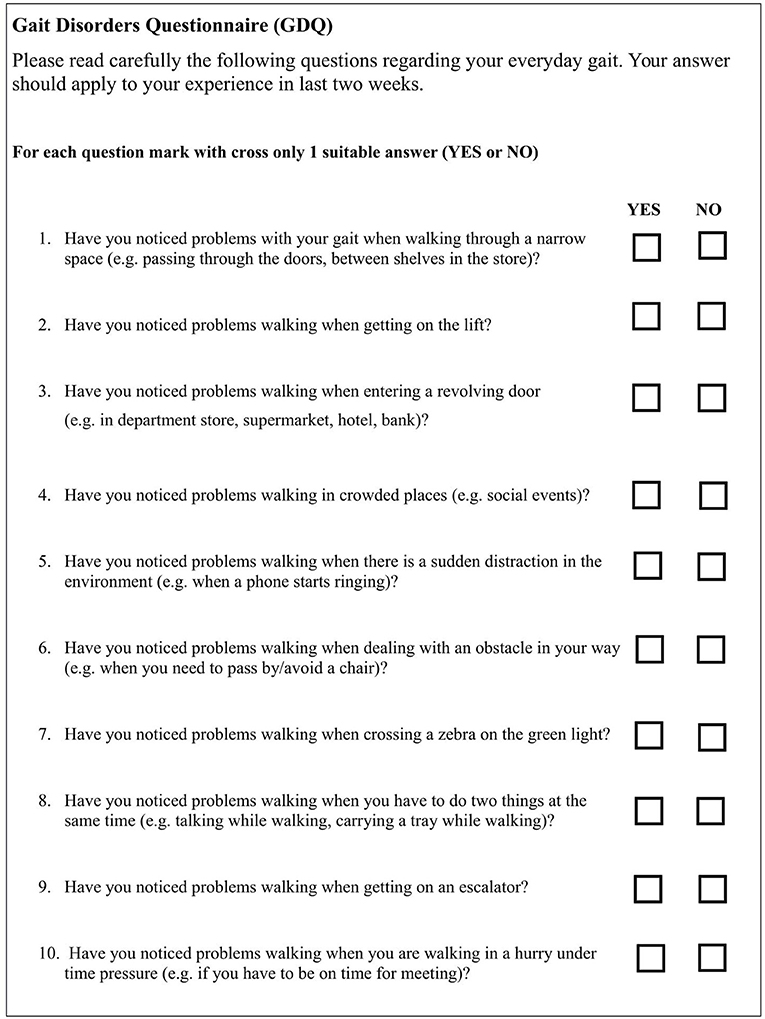
Frontiers Gait Disorders Questionnaire Promising Tool For Virtual Reality Designing In Patients With Parkinson S Disease Neurology

Parkinson S Disease Exam Stanford Medicine 25 Stanford Medicine
Q Tbn And9gcq9mx19dfze5ambhfrdn4o6aypaxmuuu1lt I33rx5a1wdvawpz Usqp Cau
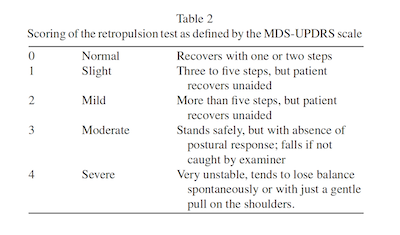
The Retropulsion Test A Good Evaluation Of Postural Instability In Parkinson S Disease Journal Of Parkinson S Disease

We Need To Talk About The Updrs The Science Of Parkinson S
The Differential Diagnosis Of Parkinson S Disease Parkinson S Disease Ncbi Bookshelf
Http N Neurology Org Content 62 1 125 Full Pdf

Parkinson S Disease Exam Stanford Medicine 25 Stanford Medicine

Sensors Special Issue Sensors And Sensing Technology Applied In Parkinson Disease

Parkinson S Clinical Presentation Physiopedia

Pdf The Retropulsion Test A Good Evaluation Of Postural Instability In Parkinson S Disease

Pdf Doppler Ultrasonographic Examination Of The Leg Veins Of Patients With Parkinson Disease

Comparing Balance Performance On Force Platform Measures In Individuals With Parkinson S Disease And Healthy Adults
Journals Sagepub Com Doi Pdf 10 1177
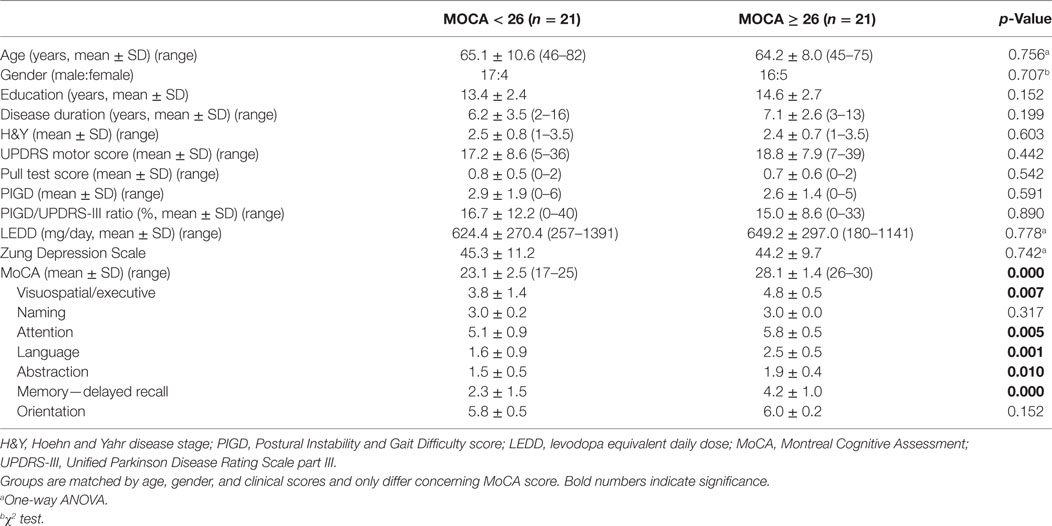
Frontiers Gait And Cognition In Parkinson S Disease Cognitive Impairment Is Inadequately Reflected By Gait Performance During Dual Task Neurology

Hallmarks Of Clinical Aspects Of Parkinson S Disease Through Centuries Sciencedirect

The In S And Out S Of Parkinson S Disease Lifespan Therapies
Www Nmrc Gov Sg Docs Default Source Events Library Neurological And Sense Disorders Aprof Louis Tan Pdf Sfvrsn e 2

Pdf Prospective Assessment Of Falls In Parkinson S Disease Bastiaan Bloem Academia Edu
Http Ems Acgov Org Ems Assets Docs Cmmty Svcs Sipp Adam riner pd and fall prevention ppt Pdf

Relationship Of Cognitive Processing Speed With Postural Stability In Non Demented Parkinson S Disease Patients Mds Abstracts

Parkinsonism Related Disorders

Exercise For Parkinson S Disease Sciencedirect

Pull Test Parkinson Parkinsons Disease Doctor Steve Abel

Abstracts 18 Movement Disorders Wiley Online Library
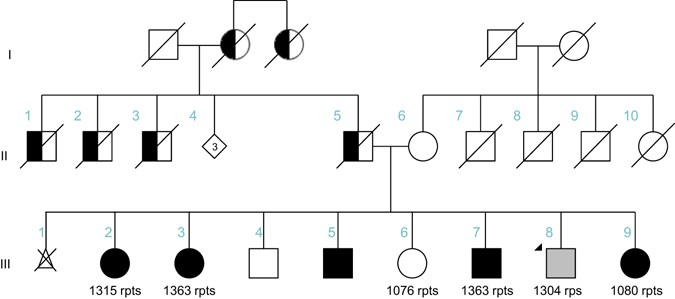
Parkinson S Disease Associated With Pure Atxn10 Repeat Expansion Npj Parkinson S Disease
Q Tbn And9gcqz0j1veqxnjsjpka4rvmgbqemymkjo9fz6428iupals6l G0zz Usqp Cau

Pdf An Alternative Clinical Postural Stability Test For Patients With Parkinson S Disease

Diagnostic Approach To Atypical Parkinsonian Syndromes Abstract Europe Pmc

3 Yard Hoen Parkinson S Disease Clinical Medicine

Parkinson Disease New Perspectives From Clinical Research Ppt Download

Updrs Parkinson S Disease And Occupational Therapy
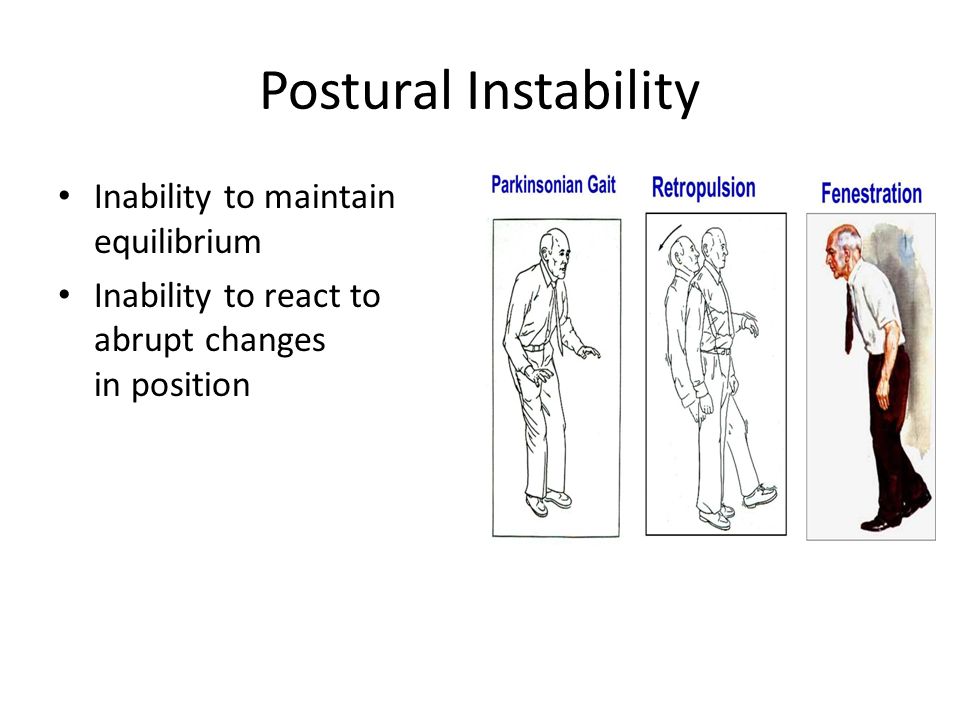
Parkinson S Disease A Geriatrics Syndrome Ppt Video Online Download
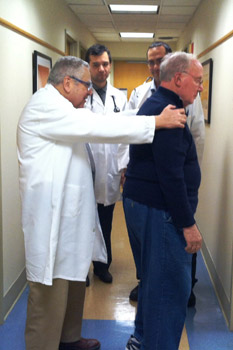
About Movement Disorders

International Encyclopedia Of Rehabilitation Pdf Free Download

Zso Parkinson Verplichte Opgaven Zelfstudieopdrachten 1 6 Zso Disease Studeersnel
Objective Assessment Of Fall Risk In Parkinson S Disease Using A Body Fixed Sensor Worn For 3 Days

Voltage Adjustment Improves Rigidity And Tremor In Parkinson S Disease Patients Receiving Deep Brain Stimulation Xu Sh Yang C Xian Wb Gu J Liu Jl Jiang Ll Ye J Liu Ym Guo Qy

Figure 1 From An Alternative Clinical Postural Stability Test For Patients With Parkinson S Disease Semantic Scholar

Postural Instability Parkinson S Disease And Occupational Therapy

Gait Analysis Comparing Parkinson S Disease With Healthy Elderly Subjects

Voltage Adjustment Improves Rigidity And Tremor In Parkinson S Disease Patients Receiving Deep Brain Stimulation Xu Sh Yang C Xian Wb Gu J Liu Jl Jiang Ll Ye J Liu Ym Guo Qy

Research In Parkinson S Disease In India A Review Surathi P Jhunjhunwala K Yadav R Pal Pk Ann Indian Acad Neurol
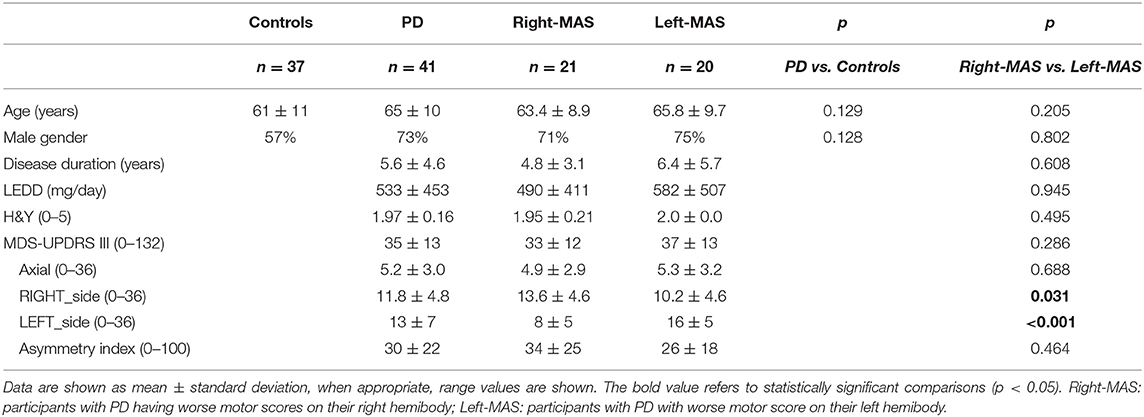
Frontiers The Choice Of Leg During Pull Test In Parkinson S Disease Not Mere Chance Neurology

Full Text A Posturographic Procedure Assessing Balance Disorders In Parkinson S Cia

An Instrumented Pull Test To Characterize Postural Responses Protocol

Quantitative Gait Analysis In Parkinson S Disease Comparison With A Healthy Control Group Archives Of Physical Medicine And Rehabilitation

Figure 1 From Pull Test Estimation In Parkinson S Disease Patients Using Wearable Sensor Technology Semantic Scholar

Parkinson S Disease Symptom Postural Instability Dr Paresh Doshi Youtube
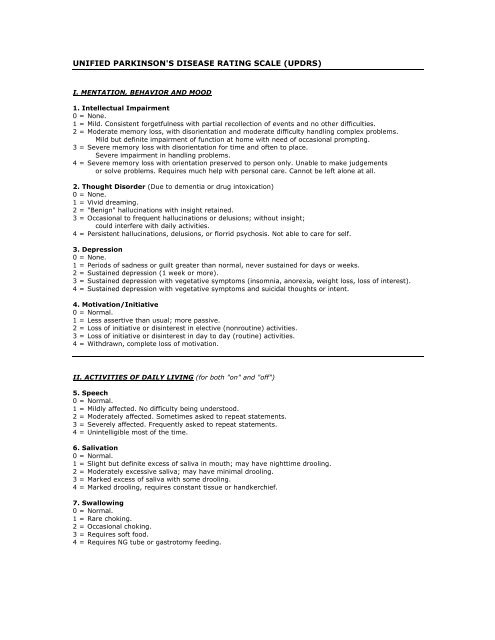
Unified Parkinson S Disease Rating Scale Updrs

The Utility Of An Instrumented Pull Test To Evaluate Postural Instability In Parkinson S Disease

Pdf The Retropulsion Test A Good Evaluation Of Postural Instability In Parkinson S Disease

Zelfstudiestudie 1 Parkinson Zso Disease What Is Rigidity And To What Kind Of Symptoms Does It Lead What Is The Pull Test What Is The Cause Of Disease Which Studeersnel
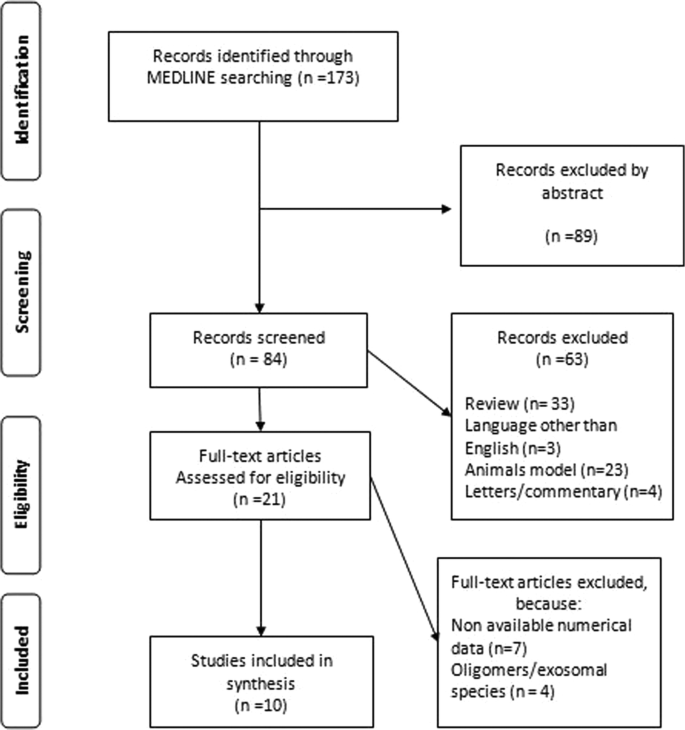
Plasma Alpha Synuclein Levels In Patients With Parkinson S Disease A Systematic Review And Meta Analysis Springerlink
Prediction Of Falls And Or Near Falls In People With Mild Parkinson S Disease

Retropulsion Youtube
Q Tbn And9gcsn Yednrjy Akj0maekw4ggtqzlizfpgyxxnr4bhrm5w Vevmr Usqp Cau

The Hoehn Yahr Scale Classifying Different Stages Of Parkinson S Download Scientific Diagram

逆行测试 对帕金森氏病姿势不稳定性的良好评价 帕金森氏病杂志

Parkinson S Why Wait Connect Neuro Physiotherapy
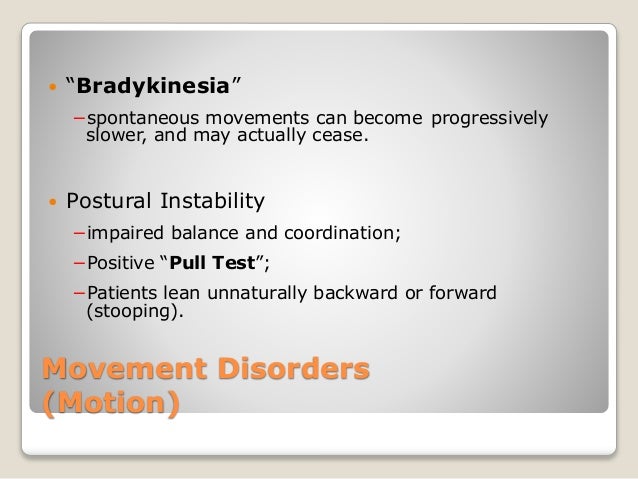
Parkinson S Disease
Www Parkinsons Va Gov Northwest Documents Pt Ed Handouts Peterson Handouts 3 16 12 Pdf

Pdf Pull Test Performance And Correlation With Falls Risk In Parkinson S Disease

An Instrumented Pull Test To Characterize Postural Responses Protocol

Latest Parkinson Gifs Gfycat

The Retropulsion Test A Good Evaluation Of Postural Instability In Parkinson S Disease Journal Of Parkinson S Disease

Parkinson S Disease Sketchy Medicine

Frontiers Evaluation Of Balance Disorders In Parkinson S Disease Using Simple Diagnostic Tests Not So Simple To Choose Neurology

Parkinson Disease Rumah Sakit Kasih Ibu Surakarta
/GettyImages-97863284-57115ef45f9b588cc2f7339e.jpg)
How Parkinson S Disease Is Diagnosed

Lessons Learned Symptomatic Trials In Early Parkinson S Disease Chapter 26 Parkinson S Disease

Parkinson S Disease

Table 3 From How I Examine My Patient The Retropulsion Test A Good Evaluation Of Postural Instability In Parkinson S Disease Semantic Scholar
Github Sayakpaul Parkinson S Disease Classifier Deep Learning Experiments To Design A Model To Predict Parkinson S Diseases With The Images Of Spiral Wave Test

Diagnostic Approach To Atypical Parkinsonian Syndromes Abstract Europe Pmc

Application Of Kohonen Maps To Kinetic Analysis Of Human Gait
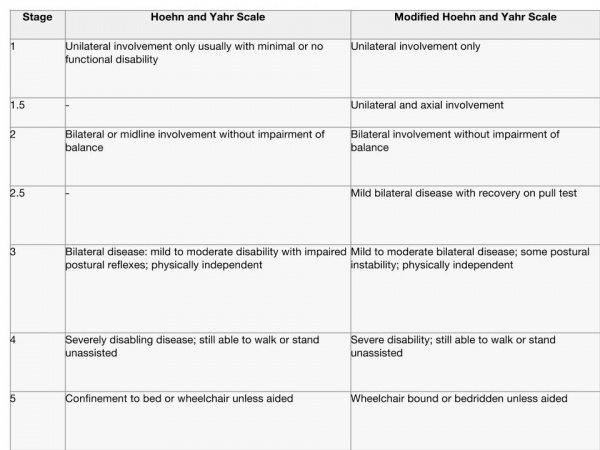
Parkinson S Clinical Presentation Physiopedia
2

Exercise Response In Parkinson S Disease Insights From A Cross Sectional Comparison With Sedentary Controls And A Per Protocol Analysis Of A Randomised Controlled Trial Bmj Open
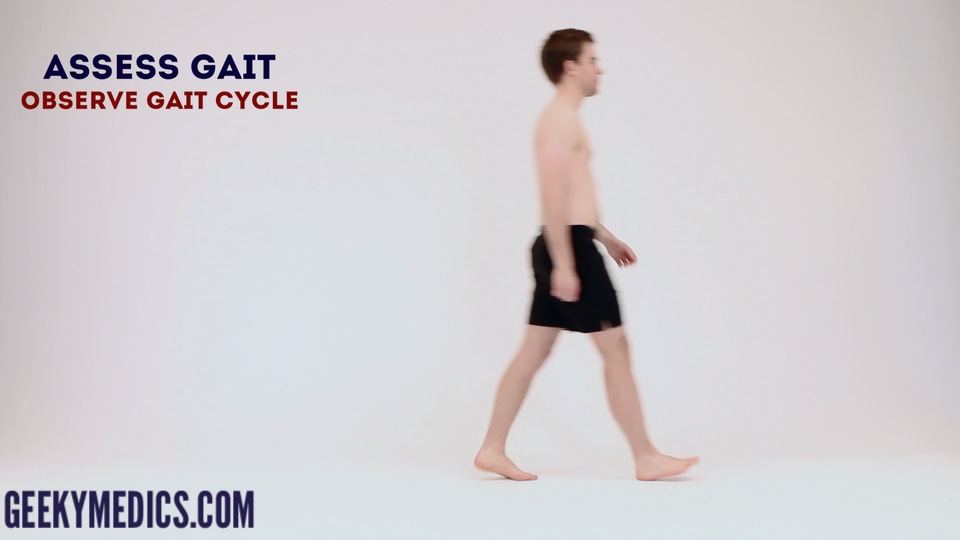
Parkinson S Disease Examination Osce Neurology Geeky Medics

Full Text A Posturographic Procedure Assessing Balance Disorders In Parkinson S Cia

Enhanced Exercise Therapy In Parkinson S Disease A Comparative Effectiveness Trial Journal Of Science And Medicine In Sport

Technology Based Therapy Response And Prognostic Biomarkers In Parkinson S Disease Results From A Prospective Evaluation Of A De Novo Pd Patients Cohort Mds Abstracts

Evaluation Of The Pull Test Technique In Assessing Postural Instability In Parkinson S Disease Semantic Scholar
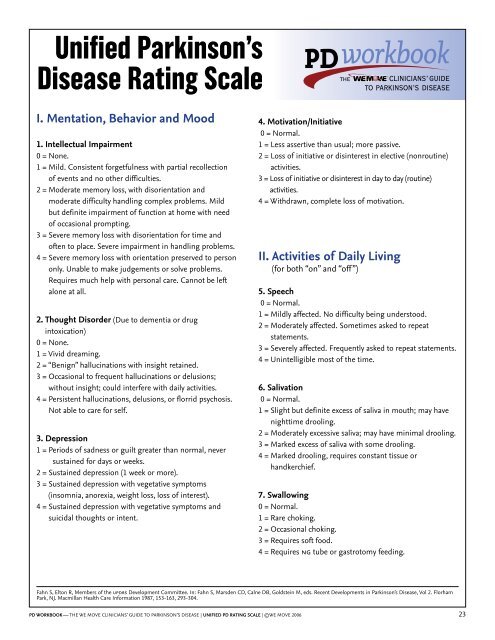
Unified Parkinson S Disease Rating Scale Medscape
2
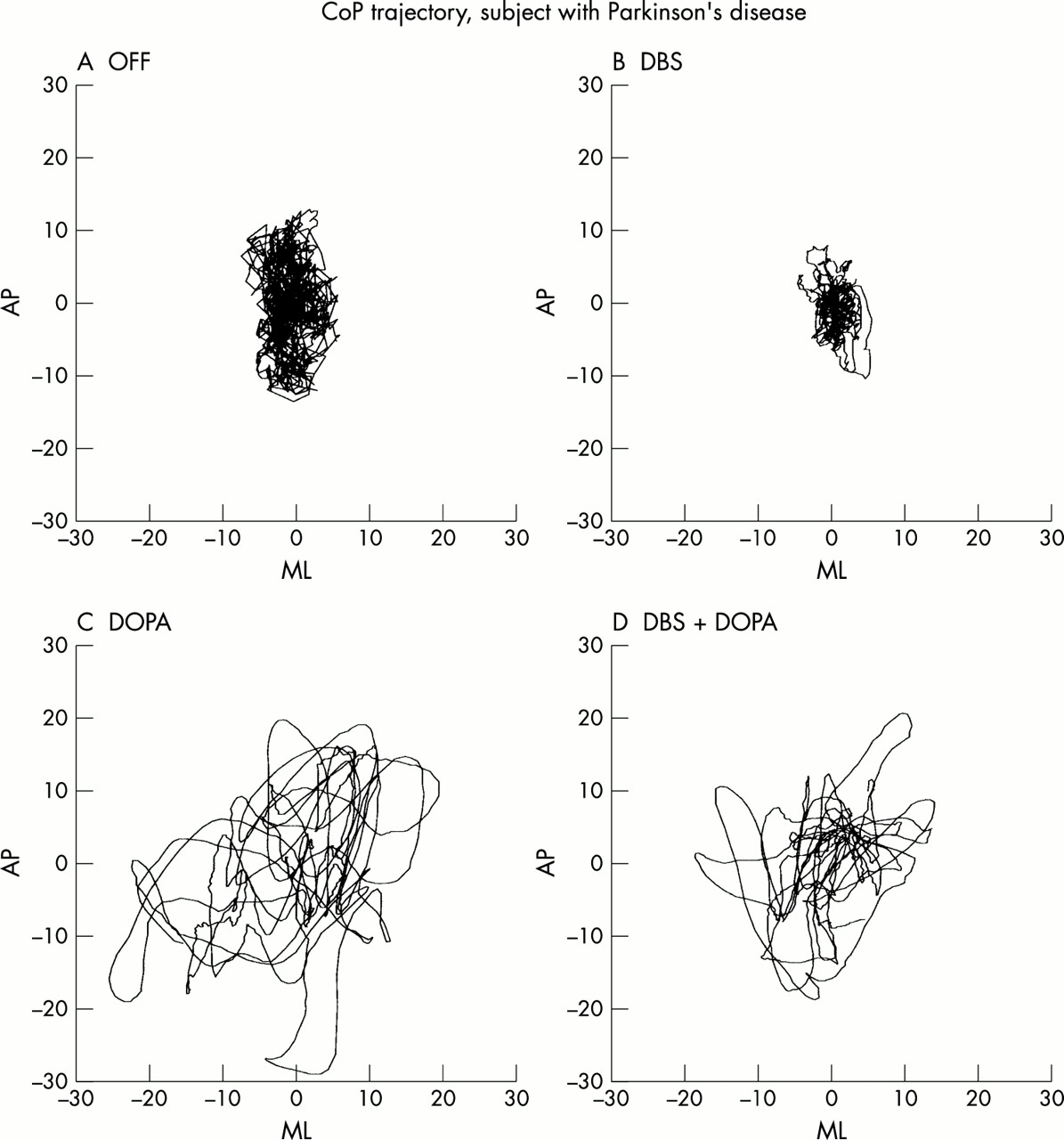
Effects Of Deep Brain Stimulation And Levodopa On Postural Sway In Parkinson S Disease Journal Of Neurology Neurosurgery Psychiatry

Pdf Pull Test Performance And Correlation With Falls Risk In Parkinson S Disease Semantic Scholar

Hoehn Andd Yahr Scoring System For Parkinson Disease Download Table

Early Postural Instability In Parkinson S Disease A Biomechanical Analysis Of The Pull Test

Pdf The Choice Of Leg During Pull Test In Parkinson S Disease Not Mere Chance Semantic Scholar

Effects Of The Agility Boot Camp With Cognitive Challenge Abc C Exercise Program For Parkinson S Disease Npj Parkinson S Disease
Prediction Of Falls And Or Near Falls In People With Mild Parkinson S Disease

Research In Parkinson S Disease In India A Review Surathi P Jhunjhunwala K Yadav R Pal Pk Ann Indian Acad Neurol
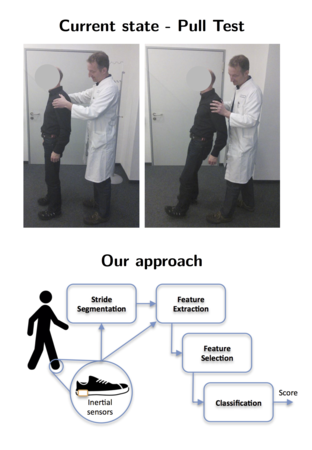
Pasluosta Cristian
Q Tbn And9gcqyrokpcoxmetl1rphwrzmtwnxkzzmblupzdrtzmcvlvn7vqpd7 Usqp Cau

Tremor Sorting Through The Differential Diagnosis American Family Physician

Pull Test Parkinson Parkinsons Disease Doctor Steve Abel
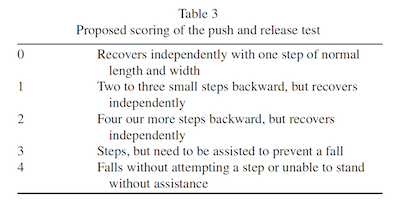
The Retropulsion Test A Good Evaluation Of Postural Instability In Parkinson S Disease Journal Of Parkinson S Disease

Research In Parkinson S Disease In India A Review Surathi P Jhunjhunwala K Yadav R Pal Pk Ann Indian Acad Neurol



